Getting Started with the PeerGFS REST API
Applies to PeerGFS v6.1.0 and later
This article describes use cases for the PeerGFS REST API and then guides you through configuring the PeerGFS REST API to perform and automate PeerGFS operations. You’ll learn how to enable the API and test it and view the available API operations. In separate articles, we’ll cover:
Executing API operations using PowerShell, Bash, and cURL scripting.
Managing job operations, including creation, modification, and management.
Creating client code that enable your application to communicate with the API.
By working through these articles, you'll learn to configure, test, and implement PeerGFS REST API functions to streamline workflows and enhance automation.
Key Use Cases for the PeerGFS REST API
The PeerGFS REST API is versatile and can be used for various automation tasks in PeerGFS environments. Examples include:
Automating job creation and management
Monitoring and clearing quarantines across volumes
Integrating PeerGFS job data with external monitoring or reporting systems
Enabling the PeerGFS REST API
Open Peer Management Center (PMC).
From the Tools menu, select Open Preferences.
Expand General Configuration in the navigation tree, and then select Web and API Configuration.
Select the HTTPS REST API using port: 8442 option.
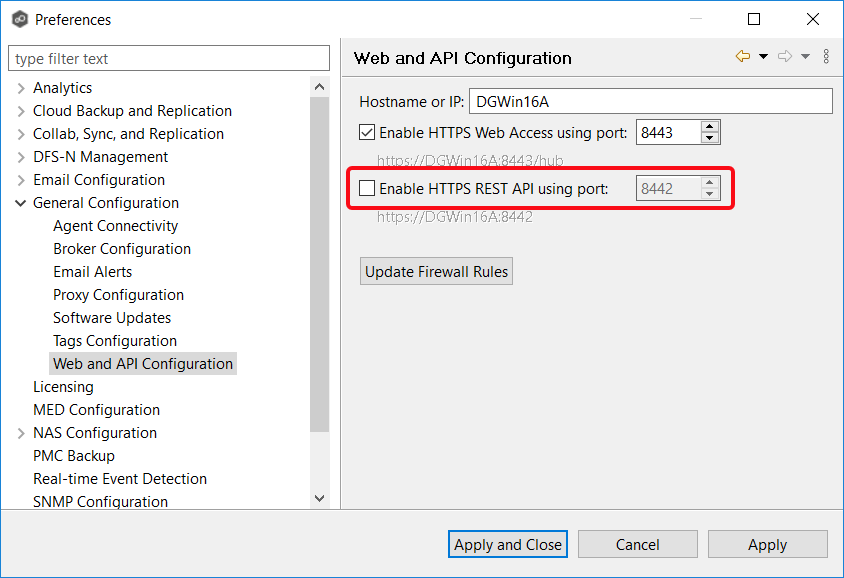
Click Apply and Close.
The API is now enabled and ready for operations on PeerGFS through secure HTTPS requests.
Testing and Browsing the PeerGFS REST API
To verify the API is operational and explore its capabilities:
Open a web browser and navigate to
<https://<PMC>:8442, replacing<PMC>with the resolvable hostname or IP address of the PMC host.Once connected, you will see a list of available API operations. This interface allows you to test API operations interactively and understand the syntax for various commands.
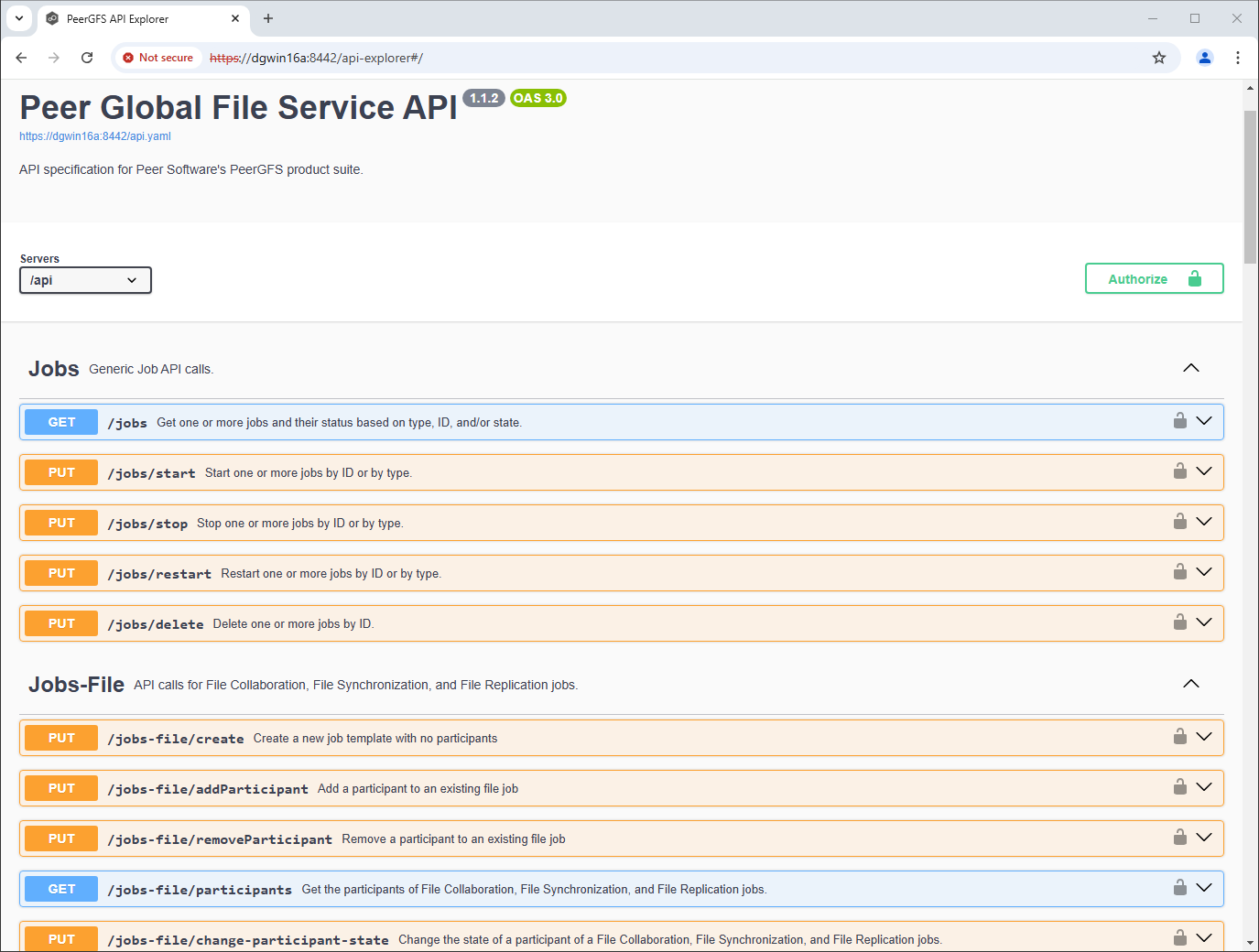
Select an operation to expand its details. The parameters and response formats are displayed.
The following example demonstrates how to view connected Agents using a call.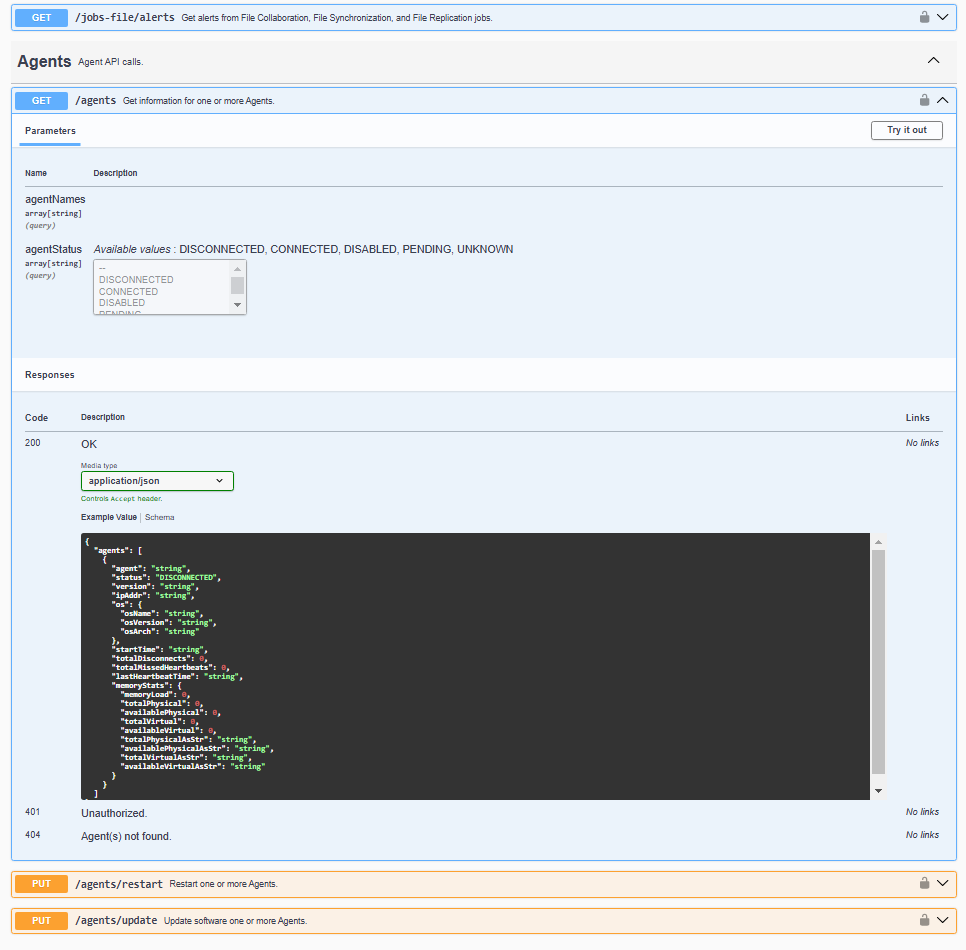
Click Try it out, and then Execute to run the operation and view the results.
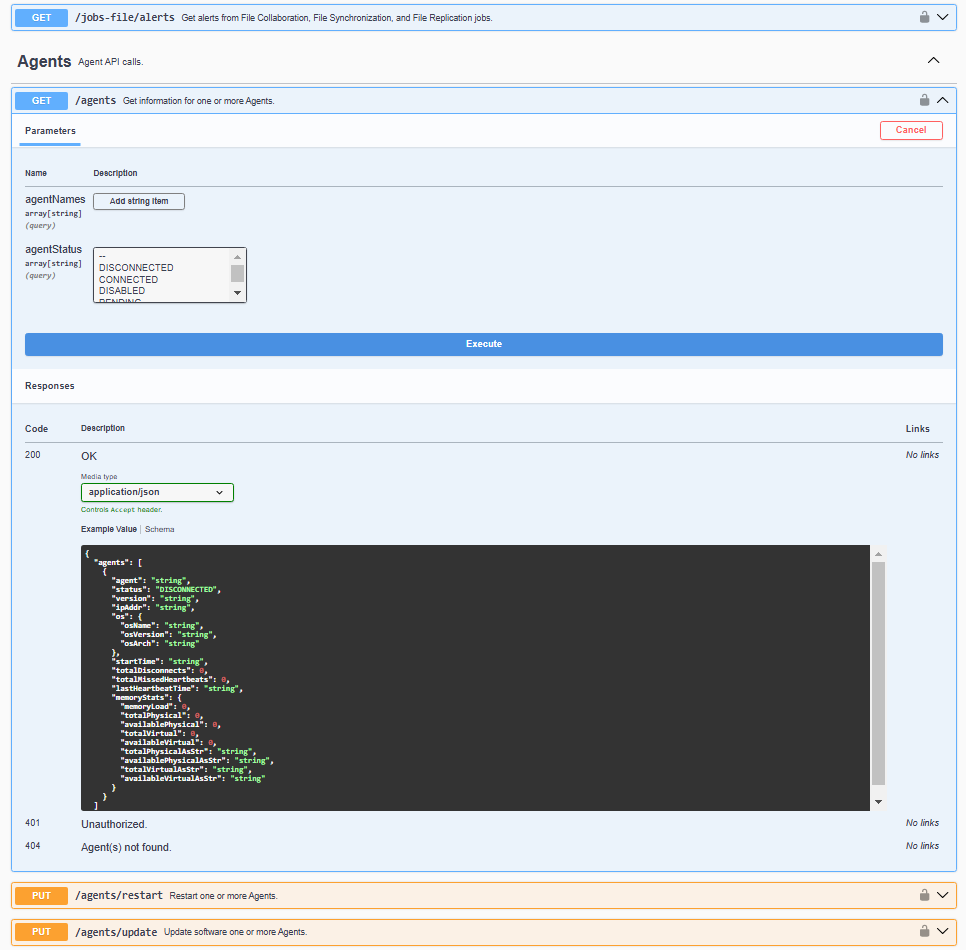
The output includes the required syntax to run the operation using cURL, which is helpful for creating custom scripts.
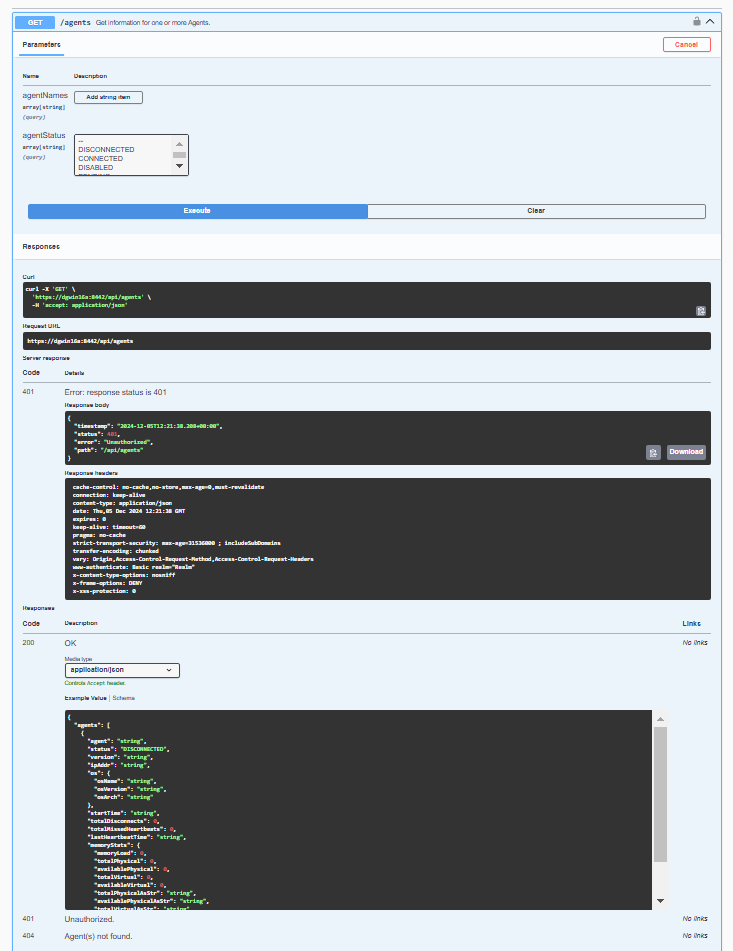
Related articles
- Check .pc-trash_bin date stored times for target protection
- Creating a Job Using Bash Scripting
- Creating a Job Using PowerShell Scripting
- Creating a Job Using Scripting
- Does the EOA of NetApp ONTAPI impact PeerGFS?
- Generating Client Code for PeerGFS API with Swagger.io
- Getting Started with the PeerGFS REST API
- Performing API Operations Using Bash
- Performing API Operations Using cURL
- Performing API Operations Using PowerShell
- Scripting Methods for API Operations
- Use PowerShell to connect to the PeerGFS API
